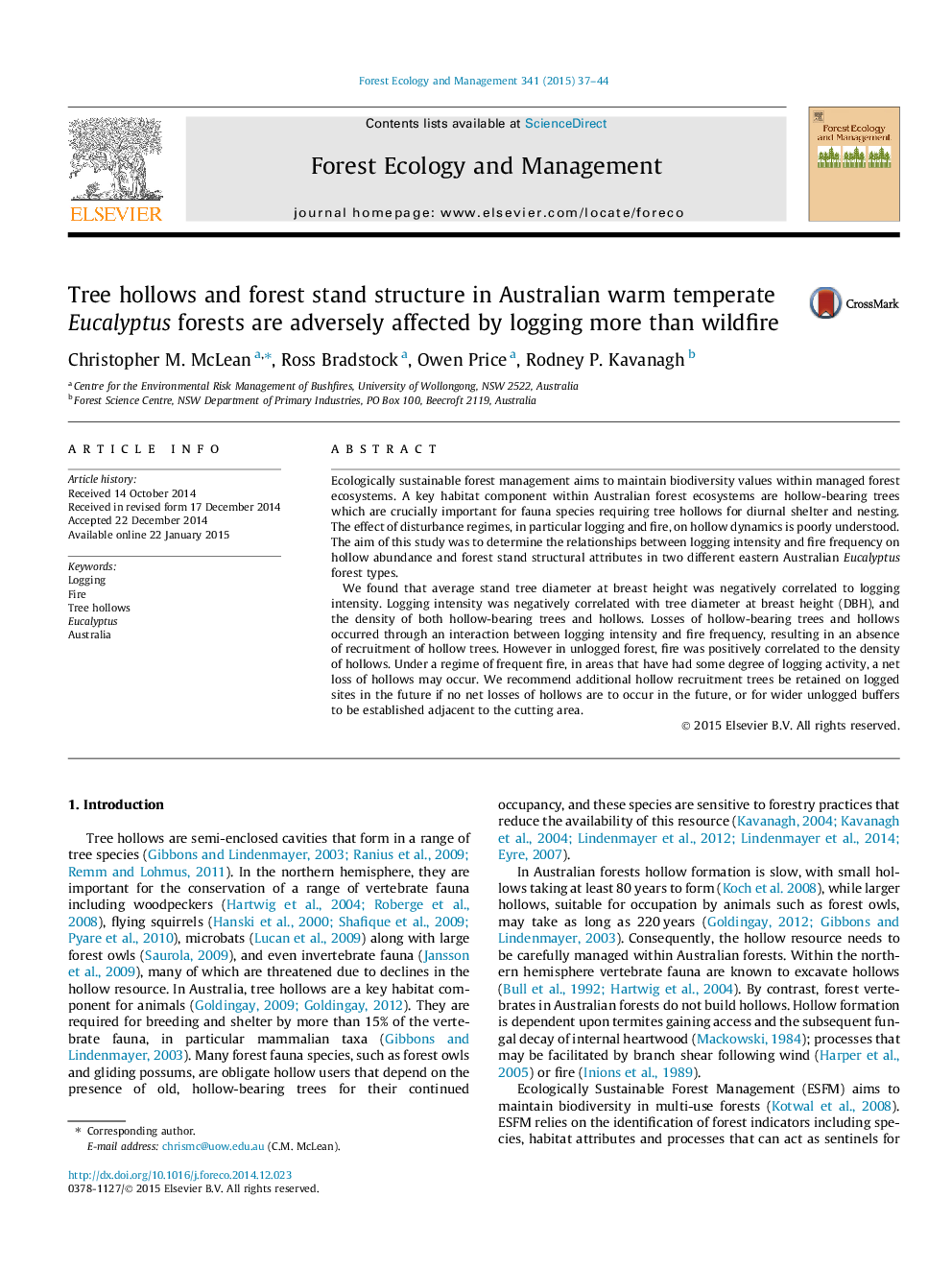| Article ID | Journal | Published Year | Pages | File Type |
|---|---|---|---|---|
| 86356 | Forest Ecology and Management | 2015 | 8 Pages |
•Logging reduced the abundance of hollow-bearing trees, which was further compounded by fire.•In unlogged forest, hollow-bearing tree abundance was positively related to fire frequency.•Current logging prescriptions for hollow-bearing tree retention may be ineffective.
Ecologically sustainable forest management aims to maintain biodiversity values within managed forest ecosystems. A key habitat component within Australian forest ecosystems are hollow-bearing trees which are crucially important for fauna species requiring tree hollows for diurnal shelter and nesting. The effect of disturbance regimes, in particular logging and fire, on hollow dynamics is poorly understood. The aim of this study was to determine the relationships between logging intensity and fire frequency on hollow abundance and forest stand structural attributes in two different eastern Australian Eucalyptus forest types.We found that average stand tree diameter at breast height was negatively correlated to logging intensity. Logging intensity was negatively correlated with tree diameter at breast height (DBH), and the density of both hollow-bearing trees and hollows. Losses of hollow-bearing trees and hollows occurred through an interaction between logging intensity and fire frequency, resulting in an absence of recruitment of hollow trees. However in unlogged forest, fire was positively correlated to the density of hollows. Under a regime of frequent fire, in areas that have had some degree of logging activity, a net loss of hollows may occur. We recommend additional hollow recruitment trees be retained on logged sites in the future if no net losses of hollows are to occur in the future, or for wider unlogged buffers to be established adjacent to the cutting area.
